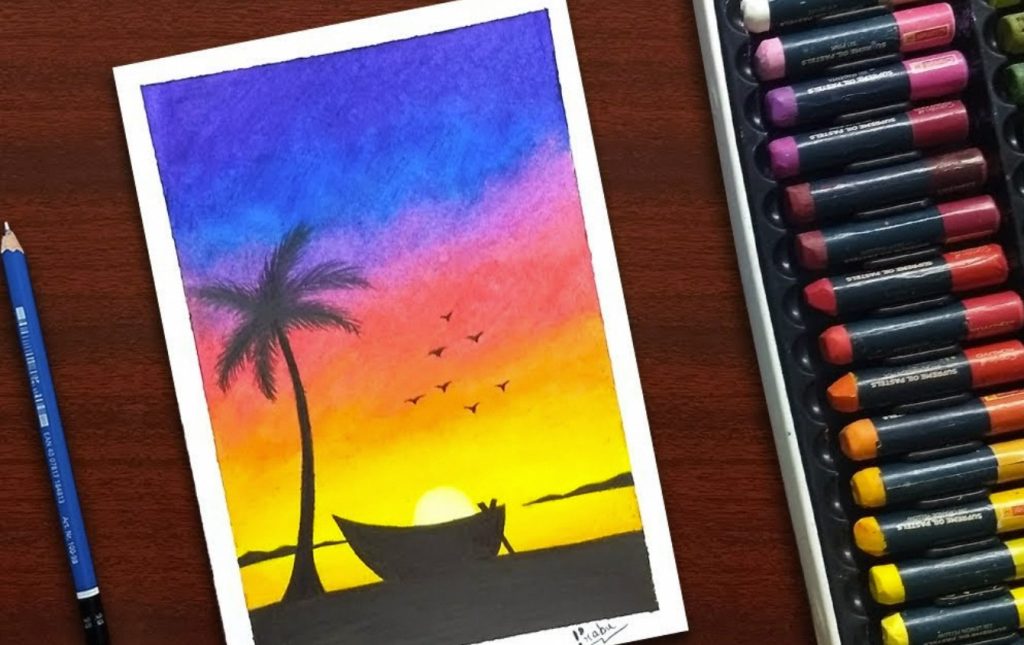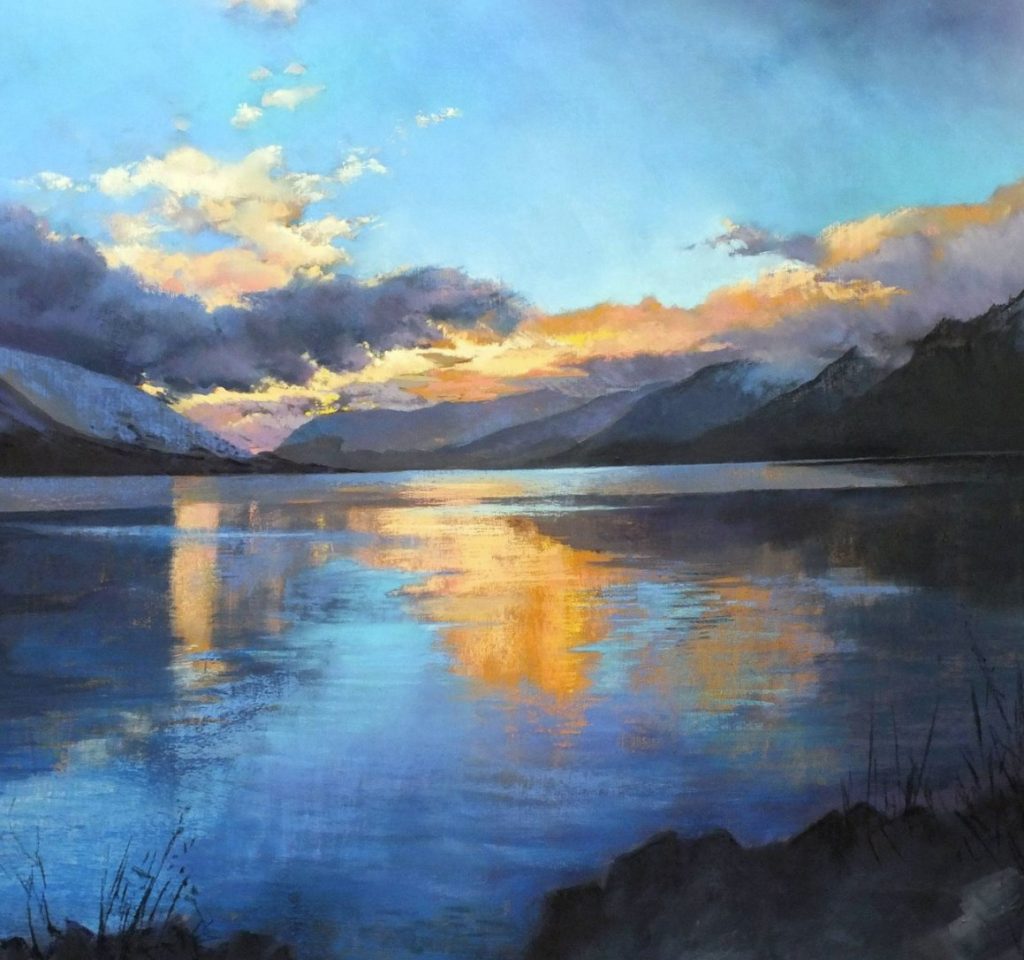The world of pastels offers artists a vibrant and versatile medium, with two distinct options: soft pastels and oil pastels. Both boast a delightful immediacy and rich colors, but their unique characteristics lead to vastly different artistic effects. This guide delves into the key contrasts between these mediums, empowering you to select the ideal tool for your artistic vision.
Part 1: The Canvas of Texture – A Tale of Two Touches

Soft Pastels: A Delicate Whisper
Soft pastels possess a dreamlike quality thanks to their powdery texture, akin to chalk. This characteristic allows for effortless blending, creating smooth transitions between colors. Their softness excels at capturing subtle textures like wispy clouds, delicate flower petals, or the soft glow of moonlight. Layering thin washes of soft pastels builds depth and creates a sense of ethereal atmosphere, making them ideal for landscapes, portraits, or capturing the fragility of nature.
Oil Pastels: A Bold Footprint
Oil pastels offer a bolder presence due to the addition of wax and oil binders. This firmer texture translates to a more direct application, leaving a visible stroke that adds a sense of energy and vibrancy to your artwork. Oil pastels excel at capturing the texture of rough surfaces like weathered wood, cobblestone streets, or the sharp angles of modern architecture. Their ability to hold their form allows for well-defined details, making them ideal for still lifes, geometric shapes, or creating graphic and dynamic compositions.
Part 2: The Art of Blending – Control and Expression
Soft Pastels: Effortless Merging

The powdery nature of soft pastels lends itself to effortless blending, allowing artists to create seamless transitions and nuanced color gradients using tools such as fingers, blending stumps, or cotton swabs. This characteristic is especially conducive to layering thin washes of pastel color, enabling artists to build depth and establish a sense of atmospheric perspective within their artwork. However, the loose and powdery consistency of soft pastels can present challenges when it comes to executing precise and intricate detail work. Their propensity to blend easily means that achieving defined, sharp lines or intricate details requires a deliberate and controlled application, as colors can quickly merge together, resulting in a softer and less precise outcome. Despite these challenges, mastering the use of soft pastels for detailed work involves refining one’s technique and discovering methods to maintain control over the medium’s natural tendency to blend, ultimately yielding striking and detailed results.
Oil Pastels: Selective Blending for Precise Control
Blending oil pastels requires more effort compared to soft pastels due to the waxy binders. This attribute offers greater control over the application and preservation of visible strokes. When blending, it is important to exercise caution as over-blending can lead to the muddying of colors and the loss of the vibrancy and texture that are distinctive to oil pastels. The medium’s capacity for retaining visible strokes makes it well-suited for creating sharp lines and well-defined details, which is ideal for architectural drawings, rendering geometric shapes, or crafting still life compositions where precise control is desired. The firm and controllable nature of oil pastels empowers artists to execute intricate and detailed work, enabling them to achieve distinct visual effects and precise mark-making. By embracing the unique blending characteristics of oil pastels, artists can leverage the medium’s inherent qualities to create artwork that showcases both spontaneity and precision.

Part 3: A Symphony of Color – Evoking Mood and Light
Soft Pastels: Muted Tones for Tranquility
Soft pastels offer a wide array of subtle and delicate colors, distinct from the richer and more vibrant spectrum typically found in oil pastels. Due to their powdery nature, soft pastels often produce muted tones that are ideal for capturing the soft, diffused light in hazy landscapes or evoking a sense of tranquility and calm. The medium is particularly adept at depicting gentle and nuanced variations in color, such as the delicate hues of a sunrise, the soft transitions of a twilight sky, or the subtle tonal shifts in natural elements like water, foliage, and atmospheric conditions. In the hands of a skilled artist, soft pastels can masterfully convey the ephemeral and ethereal qualities of light, adding a sense of serenity and depth to the artwork. This characteristic makes them well-suited for capturing the subtleties of nature and imbuing the artwork with a tranquil and contemplative ambiance.
Oil Pastels: Vibrant Hues for Bold Statements
Oil pastels boast a richer and more vibrant color spectrum. Their waxy binders offer greater color intensity, allowing for bolder statements and more dramatic lighting effects. This makes them ideal for capturing the vibrancy of flowers, a fiery sunset, or the energy of a bustling cityscape. Oil pastels excel at creating dramatic contrasts and using color to evoke a sense of excitement or dynamism.

Part 4: Unleashing Creativity – Experimentation and Exploration
Beyond Boundaries: Combining Techniques and Media
Don’t limit yourself to working exclusively with one type of pastel. Embrace experimentation by incorporating both soft and oil pastels within the same artwork to achieve a diverse range of visual effects. Leveraging the delicate blending properties of soft pastels for background elements enables the creation of seamless transitions and gentle gradients, ideal for establishing depth and atmosphere. On the other hand, the bold and vibrant strokes characteristic of oil pastels are well-suited for defining foreground elements, adding dynamic textures and impactful accents to the composition. By combining these two pastel mediums, artists can create a visually compelling and multi-dimensional artwork that features contrasting textures and color palettes, enriching the overall visual experience for the viewer. The interplay between soft and oil pastels opens up a myriad of creative possibilities, allowing artists to explore the versatility and expressive potential of both mediums within a single composition.
Practice Makes Perfect: Mastering Your Artistic Voice

Developing your artistry with pastels takes dedication and experimentation. Begin by exploring the unique characteristics of each type through small studies. As you gain confidence, attempt larger artworks, pushing the boundaries of color, texture, and blending techniques to discover your own artistic voice. Both soft and oil pastels offer endless possibilities for creative expression.
By understanding the distinctions between soft pastels and oil pastels, you’ll be well-equipped to choose the right tool to bring your artistic vision to life. Embrace the unique properties of each medium, experiment with various techniques, and embark on a creative journey filled with vibrant hues, soft textures, and boundless possibilities.





